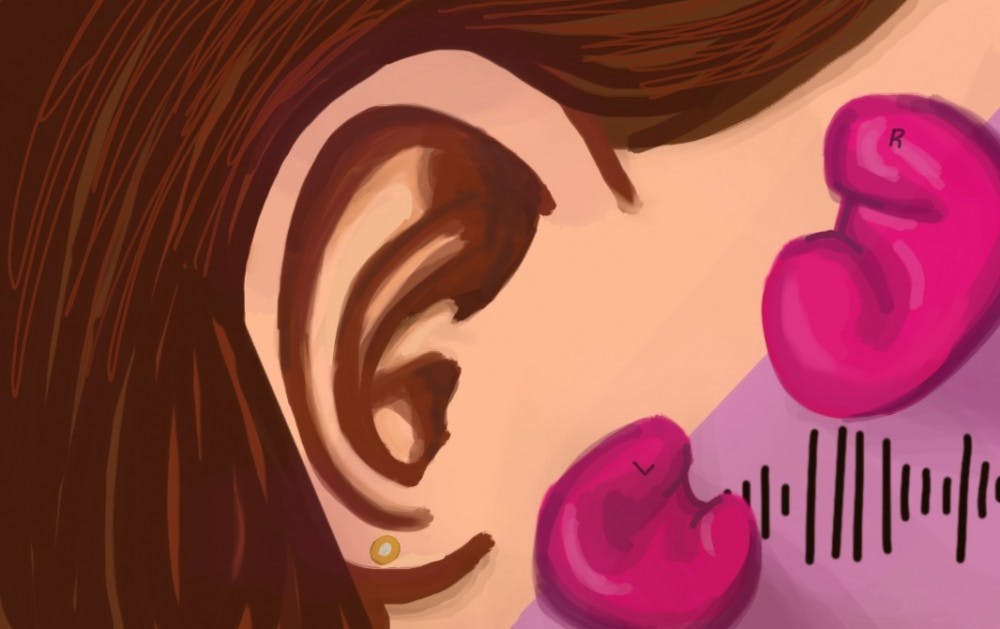The advent of high-volume music listening and an overall increase in volume in public areas is leading to significant hearing loss, according to an ASU audiology professor. However, the School of Audiology and the Student Academy of Audiology have a solution.
The School of Audiology is located in Lattie F. Coor Hall on the Tempe campus where they are offering special custom-molded earplugs, musician earplugs and earbuds to prevent hearing loss.
Ally Knickerbocker, second year graduate student in audiology and president of SAA, described the process of making the earplugs in detail.
“We’ll take an impression of your ear canal and outer part of your ear, and then using that impression we’ll send it to an ear mold manufacturing company,” she said. “They will send us back an exact copy of your ear so it’s a more comfortable fit.”
They start by making sure the ear is clean to do the procedure, and then they place an otoblock, which is a small piece of foam or cotton, inside the ear to protect it.
“We use a silicon mixture, and we mix these two together,” Knickerbocker said. “One's a catalyst for it. We use a syringe, and we actually insert it into your ear. It feels a little cool, and you’ll feel a little stuffed up for a few minutes.”
The process takes a total of five minutes to produce a perfect ear mold, and the manufacturing and shipping takes two to three weeks.
The standard earplugs and earbuds cost $105 per pair, while the musician earplugs cost $140. This fee includes the impression, the earplugs or buds themselves and an optional fitting that teaches you how to insert and remove them.
Mollie Harding, clinical assistant professor, co-adviser of SAA and a graduate of the audiology program at ASU, said the push for promoting of the earplugs in the community is a response to recent changes.
“The incidence of noise-induced hearing loss has increased over the last 15 years, and part of that has to do with the rise in boutique fitness classes and people not protecting their hearing during their leisure activities like exercise, participating in creating music or listening to music at concerts (or) shooting,” Harding said.
This year, SAA is starting an outreach effort to educate the community about hearing loss.
On Sept. 23, the audiology team went to an indoor cycling studio called Flywheel where the loud noise levels could potentially be damaging to cyclists' hearing. Harding said it only takes around 15 minutes to damage your hearing in a loud situation.
“(We will be) going to different areas around the Valley as well as potentially going to other exercise clubs or to other businesses too that would be willing to let us set up a table and talk about noise-induced hearing loss,” Knickerbocker said.
Emma Durivage is a first year graduate student in the audiology program which only accepts 15 people a year. Durivage’s class is only 13 students, and, because of this, they form a tight-knit relationship.
Durivage said the main point of these ear plugs is having them fit perfectly without noise leaks unlike regular earplugs.
“We want to provide hearing protection knowledge,” Durivage said. “I feel like right now with technology and all these new headphones coming out and listening to music, everybody listens to it so loud that by the time they get to a certain age they're going to have noise-induced hearing loss.”
Harding said the audiology program prepares students like Durivage for clinical practice in diagnosing and treating hearing loss.
The SAA receives a portion of the funds from the sale of the custom earplugs and earbuds which they put this toward White Coat Ceremonies, graduation activities and scholarships.
There has also been a rise of noise-induced hearing loss diagnosed in younger people at the ASU audiology’s fully functional clinic, but Harding said hearing damage is entirely preventable.
“Hearing loss is associated with feelings of depression, isolation, loneliness,” Harding said. “In older people, hearing loss is also associated with the onset of dementia, and so if you prevent loss of hearing, (you can) at least slow the onset of some of those harmful social effects as well as cognitive effects.”
Harding also said earplugs don’t completely eliminate noise, but rather soften the noise to safe levels. Students and the community can order the personalized earplugs by emailing the School of Audiology here.
“(If) you take steps now as a student when you're younger and wear earplugs to a loud concert or even to an exercise class, you're going to have a better chance of preserving your hearing further along down the road,” Knickerbocker said. "So, you can still keep enjoying music."
Reach the reporter at egilchr1@asu.edu or follow @Ethan_G45 on Twitter.
Like The State Press on Facebook and follow @statepress on Twitter.





